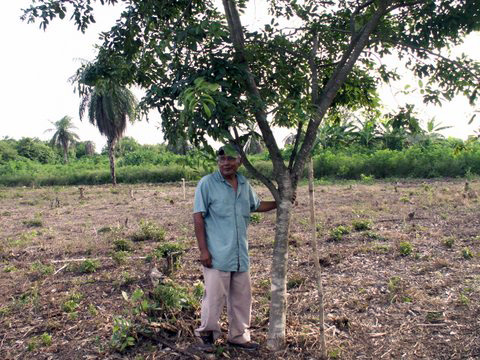Your cart is currently empty!

The Joy of Having a Friend Who Continues Creatively Working with Ideas You Share Together
Alfonso Vallejos has been a friend to me since the mid-1980s. For about 5 years he worked with me while CRWRC was working in Belize. Alfonso, the philosopher-farmer believes that people are called by God to take care of God’s creation. It’s a wonder to see the way he has continued to develop ideas we shared together, but has innovated with his own ideas. He has diligently worked to care for his plot of land in Patchekan Village, Corozal District, Belize, Central America. In a cultural context where people in the 1960s to 1980s considered the native forest as “bush” that needed to be bulldozed and burned to make way for the cash crop, sugar cane—Alfonso has been proving that a farmer can regenerate the life-giving top soil humus by not burning and by using nitrogen fixing trees and nitrogen fixing bean species to shade out weeds and enrich the soil again—-for crops like corn, black beans, watermelons, and squash. Alfonso has also added an irrigation system so that he can grow crops in the dry season.

Leucaena (Guaxim in Yucatecan Maya) is shrubby tree that the Mayan’s of long-ago knew enriched the soil. They would intentionally choose places that had a lot of leaucaena to slash/burn and plant their corn fields. Alfonso leaves some leaucaena bushes for the dispersed shade and nitrogen-rich leaves that fertilize the soil and the food plants he grows.
Mucuna (Velvet Bean) is a fast-growing nitrogen fixer that smothers out weeds and takes 50-100 pounds per acre of nitrogen from the air for crops to use. Alfonso has learned that mucuna can help restore land that had been taken over by grass weeds and that it can also help to hide watermelons from thieves!
Alfonso’s brother Ismael is a retired school teacher who now is one of the pioneers with fish farming in the Corozal area. He is growing red tilipia. ( I wonder if this is the red “tabtim” that market vendors in Chiang Mai, Thailand barbecue over charcoal and sell for about $2 per fish?) Ismael has had to overcome problems with predators. He told me that dragon flies and kiskadee fly catchers raid the tiny baby fish when they are swimming close to the pond surface. So, he had to build a tank above ground and cover it with screen: to grow the fish until they are about 2 to 3 inches long.




